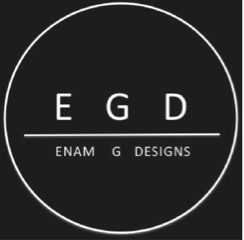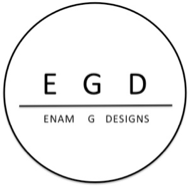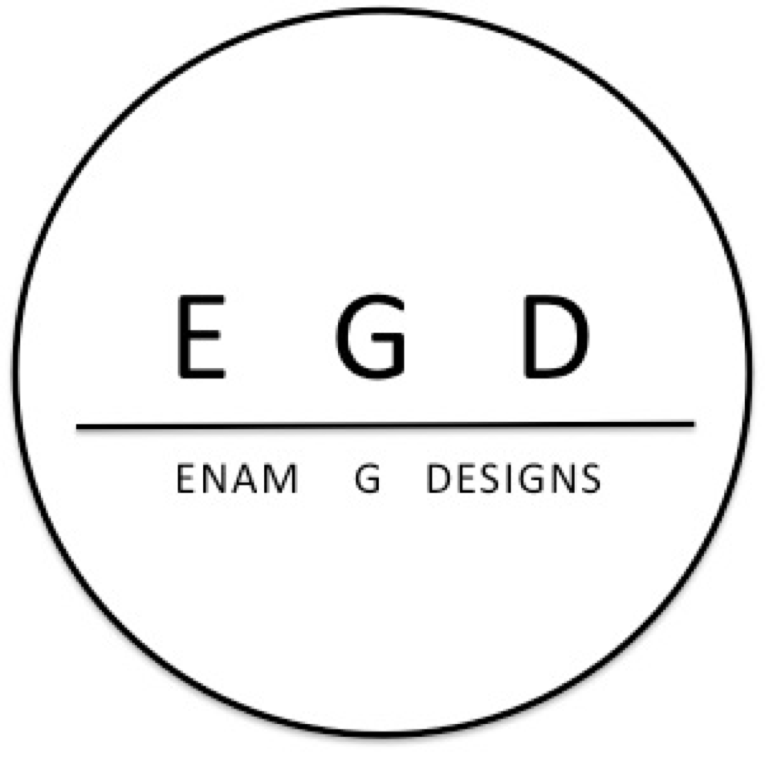Enam Gbewonyo: Gardez L’Eau – by George Vasey
Plotting a Thread…
Knitting has many associations and is most often metaphorically aligned to acts of maintenance, recuperation and healing. We knit to clothe and to fix, to conceal and warm our bodies, pass the time and engage our hands. These processes are repetitive and mechanic, modest and incremental choreographies. Textiles is of the body and for the body, a somatic memory held deep within our muscles.
The British Ghanaian artist Enam Gbewonyo uses textiles to tell stories about bodies and histories. The artist’s biography elides personal and ancestral connections to fabric. Before embarking on a career as an artist, Gbewonyo studied textiles design and worked in fashion. A formative moment for her was visiting Ghana and being introduced to weaving histories, encountering working looms and seeing the artisans’ skills up close. Gbewonyo’s research and broadening awareness of her ancestral history led her practice towards the symbolic and material power of fabric; working across performance, sculpture and wall mounted works. She belongs to a rich lineage of artists such as Senga Nengudi, Shiela Hicks, Lenore Tawney, Faith Ringgold and Louise Bourgeois who have expanded the vast potential fabric to comment on the body and identity. The vibrant quilts of Gee Bends, made by African American women in rural Alabama, are another touchstone.
Gbewonyo’s practice combines embroidery, weaving, knitting and print across a broad array of materials. The series Nude Me/ Under the Skin (2016 to present) is characteristic, incorporating nylon tights that are variously knitted, braided, woven, appliqued, burned, cut and tied. Fabric becomes flesh that is variously tarnished and intimate, the subject of violence as well as tenderness. The series reveals the racism of hosiery, an industry — like many others — that naturalises the beauty ideal of white skin and subjugation of Black womanhood.
Ghosting…
Gbewonyo’s new installation Gardez L’Eau, for God’s House Tower in Southampton takes the form of a monumental series of knitted works that snakes through the building, hanging from girders and draped onto the floor. The sinewy forms made in fabric and metal soften the imposing architecture, echoing the lapping waves outside.
The installation is made with materials significant to the building’s layered histories including: wool which was pillaged from the King by invading French troops. Rope which was picked by the female prisoners to source oakum. The metal wire signifies the metal of the prisoner’s chains and the chains of a ship’s anchor that are fashioned into symbolic keyhole gun ports that connect the building to the sea. The predominate colour of the dyed wool is pastel blue and ivory which mimics the colour of sea foam lapping at the Southampton shoreline and the clouds above it, connecting the ocean and sky. The wool is embroidered with words such as ‘Windrush, passage, living and crumbling’ taken from dialogue in Collecting God’s House Tower’s Stories film, eliding personal and collective memories.
The installation was partially made at the artist’s studio and during a residency in the gallery and workshops involving local knitters, artists and students. The strenuous labour required to produce the installation involved repetitive cutting and lugging metal around that took a toll on the artist’s hands and back. Reflecting on the physical exertion that the work required, Gbewonyo likens looping the rope around the building’s beams to working on a ship’s sail. God’s House Tower has had many uses during its history and the artist’s extensive research led her to explore the site’s former history as a prison. Gbewonyo parallels the harsh labour enforced on the women prisoners with the duress that she voluntarily endures; the artist enacting a kindred physicality that embodies an empathy with their plight.
The symbolism of the metal chain — used to create the sinewy forms — is multivalent, recalling ship’s anchors as well as the history of enslavement. Chains recall captivity and, also in more benevolent contexts, connate community and belonging. They are apt metaphors for God’s House Tower’s complex histories which has historically hosted these disparate and competing realities.
The installation appears throughout the building connecting physically and conceptually to the building’s multi-use histories. The sculpture snakes up to the long since deinstalled timeball on the roof. This connected Southampton to Greenwich Mean Time enabling ships to synchronise their chronometers. Gbewonyo’s newly imagined timeball charts the stories of the sea as a site of passage, surfacing the histories of enslaved people thrown overboard at sea and those held in captivity as well as others seeking a new life or fleeing war. The installation animates the location, directing us to hidden and marginalised histories.
The work is accompanied by a sound piece made in collaboration with Southampton based sound artist and producer Anihma. The work incorporates elements of English Folk, Basque and Caribbean instrumentation alongside excerpts of a Deborah Gearing poem, dialogue from the Collecting God’s House Towers Stories film and the sound of water.
The installation is completed by a solo performance captured in a 16mm connecting each element of the work. In the film Gbewonyo is dressed in her own costume evoking Victorian dress. The dancing is informed by Morris dance, Aurresku (a traditional Basque dance) and masquerade as she brings different parts of the building to life. We see her switching between jumping on the spot to more acrobatic type displays; moving between solemnity and joyfulness. At times her body multiples, doubling up. She begins to scream. The film move in closely to her face. At other points it moves out of focus.
From limbo to the tarantella, the emancipatory roots of dance often start out in folk histories rooted in trauma. If we hold memory in our bodies, dance can offer brief respite, a moment of catharsis. Gbewonyo’s choreography is part celebration and psychic channelling; bringing multitude of stories together within God’s House Tower and Southampton — histories of incarceration and transport, migration and exchange. If fabric is for the body and of it; Gbewonyo uses her own body as a portal for these histories.
If the Walls Could Speak…
God’s House Tower was originally built in the 13th century as a gatehouse and refuge for travellers. It was soon fortified following a French invasion and fell into disrepair as Southampton’s fortunes declined in the 16th and 17th century. It became a prison housing typically female inmates as young as 13 with many of them put in dire conditions for petty crimes. Gbewonyo’s research directed her to Mary Rowsell who was tried for the murder of her baby. Rowsell was not convicted but the artist talked to the historian Deborah Gearing about the likelihood that Roswell suffered with post partum depression, a condition that would not have been recognized at the time. Further research led the artist to other inmates such as John Geagon who sold his plantation in Saint Kitts to fund a comfortable life in debtor’s jail. It seems captivity weighed more heavily on some than others; the building’s history a nexus for inequity and privileges born from the slave trade.
After its use as a prison the building became a morgue and storage facility until the 20th century when it housed an archeology museum. It now operates as a multi-use arts and heritage site programmed by ‘a space arts’ with a temporary exhibition programme and permanent galleries telling the history of the site. It is a complex and messy site, providing Gbewonyo with a resonant context. The artist was particularly drawn to episodes throughout Southampton’s history that catalysed her interest in the commission’s development. In 1937 it was the site of 4,000 Basque child refugees arriving from the Spanish Civil War, many of whom settled in Southampton. From the 1940s onwards Southampton docks saw the arrival of communities from the Caribbean as part of the Windrush generation.
While Southampton was a smaller port than London, Bristol and Liverpool it has a significant naval and shipbuilding history. The boats built here transported the raw materials and enslaved people of the British Empire from the Caribbean and Africa to sugar and cotton plantations. Many public figures in Southampton owned plantations and profited from slavery. God’s House is a site that connects histories of globalisation, trade, travel and colonialism through the sea. At once looking outwards and inwards to the rest of England. It is a space that has offered hope to some and violence to others.
Beware of the Water…
The French title of the work Gardez L’Eau loosely translates as “beware of the water”. The French title evokes the story of Huguenots and influence of French communities in Southampton. The saying is historically synonymous with the emptying of chamber pots from tenements onto the street below and was shouted as an advanced warning.
Gardez L’Eau is a surfacing of the sea as a space of passage and possibility; a place of encounters and lives upended and cut short. Looking at Gbewonyo’s work we’re reminded that the histories of globalisation are not new; they were set in motion hundreds of years ago as the sea became a conduit between continents; (often forcibly) transporting people, plants, food and animals as well as diseases that wiped out communities. The world we now inhabit is shaped profoundly by these incursions across oceans hundreds of years ago.
Gbewonyo’s commission focuses on Southampton’s long and entangled histories as a port and threshold between Britain and the rest of the world. She looks backwards to move forwards. When I look at her work I think about the generations of communities arriving on these shores; homes left behind and new homes yet to be made. I think about how home is a somatic memory held in the mind and our muscles as much as a physical space to be inhabited. I think about the trauma of exile and dislocation.
From spinning a yarn to plot threads, the language of storytelling is permeated by the symbolism of fabric. Text and textile share the same latin origin, texture which means to weave. Fabric is embedded with memories that speak up and await curious ears. Gbewonyo weaves personal and collective memories into narratives that resonant and point a way forward. She understands that the stories we tell ourselves about the past are crucial to the world we want to inhabit in the future.
– by George Vasey, 2022


